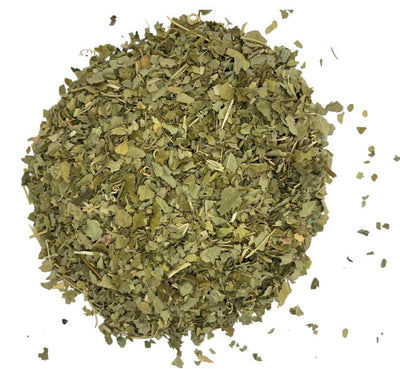Ideal Tea Growing Environments
Conditions for Growing Tea
The tea plant thrives in specific environmental conditions, which must be met to produce the best quality tea. The plant prefers to grow in acidic soil and needs temperatures between 10ºC and 35ºC to grow well. Some varieties of the plant can survive short periods of frost and snow during the winter months. Rainfall needs to be around 2000-2300 mm each year, and the soil must be well-drained, making the steep slopes of mountain ranges ideal locations for tea cultivation. In drought conditions, the tap roots can often find enough water for the plants to manage until the next rains fall. If the roots of the bushes stand in water for too long, the plants will die.

Picking tea leaves
Subvarieties of Tea Plants
The tea plant belongs to the Camellia sinensis family, which subdivides into two different varietals. They are both cultivated globally for tea production, each with different environmental requirements.

Comparison of 2 leaves with Camellia sinensis var. sinensis on the left and Camellia sinensis var. assamica on the right.
1) The Camellia sinensis var. assamica, known as ‘the big leaf variety’, likes to grow at sea level where the climate is hot and steamy like Assam, South China, Sri Lanka and East Africa. These conditions make the plant grow faster, giving the tea a malty flavour and a stronger colour, and are better suited to the manufacture of black and dark teas.

Tea plantation in Castlereagh Reservoir Hatton, Sri Lanka
2) The Camellia sinensis var. sinensis, with its tiny leaf buds and small, neat leaves, likes cool, misty mountain peaks with altitudes of up to 2100 metres (7000 feet) like China, Japan, Tibet, Taiwan, Darjeeling, Nilgiri. These conditions mean slower growth and finer, more subtle flavours and are best suited to the manufacture of green, yellow and white teas.

Longjing tea garden in Hangzhou China
Importance of Choosing the Right Varietal for Location
Over the centuries, the tea plant has modified itself and adjusted to different local conditions, resulting in thousands of tea varietals growing in different places across more than fifty countries. When farmers decide to grow tea, they must carefully choose a varietal that will grow happily in the unique conditions of that location. Like any gardeners, the farmers must choose carefully if they want their plants to thrive.
If you're interested in trying some of the different types of tea that thrive in unique environments, you might want to check out products like Ceylon Orange Blossom (Camellia sinensis var. assamica) which is a blend of Ceylon tea from Sri Lanka and sweet orange flavours. Or Oolong and Rose Tea (Camellia sinensis var. sinensis) which is a blend of oolong tea and rose buds, offering a fragrant and flavourful experience. These teas are examples of the variety of teas that are available, each with its own unique taste and growing conditions. By understanding the environmental factors that contribute to the growth and production of tea, you can appreciate the nuances of each tea variety and explore the many different teas that the world has to offer.








